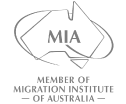Australia’s Temporary Graduate Visa (subclass 485) serves as a critical bridge for international students transitioning to permanent residency (PR). This visa enables graduates to gain Australian work experience while exploring pathways to secure long-term settlement through the General Skilled Migration (GSM) program or employer-sponsored routes. With recent policy changes prioritizing regional migration and employer retention[9][17], understanding the evolving landscape is essential for optimizing PR outcomes.
Structural Overview of the Temporary Graduate Visa
Post-Study Work Stream Dynamics
The Post-Higher Education Work stream permits graduates with Australian bachelor’s degrees or higher to remain in Australia for 2–5 years, depending on their qualification level[2][19]. Doctoral graduates receive up to 6 years of post-study work rights, while master’s degree holders qualify for 3–5 years[20]. This period allows candidates to secure skilled employment, achieve higher English proficiency, and accumulate points for GSM applications.
Regional Incentives and Extended Stay Options
Graduates studying in designated regional areas (e.g., Gold Coast, Newcastle) may qualify for the Second Post-Study Work stream, adding 1–2 years to their visa duration[20]. To activate this extension, applicants must demonstrate continuous residence and employment in regional zones for at least two years[20]. These provisions align with Australia’s broader strategy to distribute skilled migrants beyond major cities, offering accelerated pathways to PR through subclass 491/191 visas[5][11].
Primary Pathways to Permanent Residency
Skilled Independent Visa (Subclass 189)
The points-tested subclass 189 visa remains a popular choice for 485 holders without employer or state sponsorship. Key requirements include:
- Nominated occupation on the Medium and Long-Term Strategic Skills List (MLTSSL)[6]
- Competitive points score exceeding 85–95 in most cases[12]
- Positive skills assessment from the relevant authority (e.g., Engineers Australia, CPA)
- Proficient English (e.g., PTE 65 in all bands)[16]
Recent invitation rounds highlight intense competition, with 15,000 subclass 189 invitations issued in mid-2024 but requiring minimum scores of 95 points for high-demand roles like Registered Nurses[10].
State-Nominated Visas (Subclass 190/491)
State sponsorship through subclass 190 (permanent) or 491 (provisional) visas provides 5–15 additional points, significantly improving invitation chances[7][9]. For example:
- New South Wales: Prioritizes healthcare and IT professionals in Sydney
- Victoria: Targets engineering and education sectors
- Western Australia: Requires job offers for construction and mining roles
The subclass 491 visa mandates 3 years of regional work before qualifying for PR via subclass 191, with recent policy changes ensuring priority processing for regional applications[9].
Employer-Sponsored Pathways
The Employer Nomination Scheme (subclass 186) offers direct PR for 485 holders with 3+ years of full-time experience in their nominated occupation[18]. The Core Skills Occupation List (CSOL) now includes 456 eligible roles, ranging from Software Engineers to Early Childhood Teachers[17]. Employers must demonstrate inability to fill positions locally, with recent reforms allowing 180-day job mobility between approved sponsors without resetting the PR eligibility clock[17].
Strategic Points Optimization Techniques
Enhancing English Proficiency
Achieving Superior English (PTE 79 or IELTS 8) adds 10–20 points, while Proficient English (PTE 65) contributes 10 points[16]. For example, a 32-year-old IT professional with Superior English gains 75 base points before factoring in work experience or regional employment[12].
Professional Year Programs (PYP)
Completing a 12-month PYP in accounting, engineering, or IT through accredited providers like ACS or Engineers Australia grants 5 additional points[13]. These programs combine formal training with internships, improving employability in sectors facing skill shortages.
Regional Employment Bonuses
Working in Category 2 regions (e.g., Adelaide, Perth) for 12 months provides 5 points, while Category 3 regions (e.g., Darwin, Hobart) offer 15 points after 3 years[11]. Coupled with subclass 491 nominations, this strategy can elevate scores by 20–30 points.
NAATI Credentialed Community Language (CCL)
Passing the NAATI CCL test in languages like Mandarin or Hindi awards 5 points, particularly beneficial for candidates lacking Australian work experience[14]. Testing centers operate in 15 global locations, including Dubai and Singapore, with results valid for 3 years[14].
Policy Changes Impacting PR Pathways
2024–25 Migration Program Reforms
Australia’s updated migration plan reduces Skilled Independent visas to 16,900 slots but increases Employer-Sponsored visas to 44,000[9]. This shift emphasizes employer retention, with subclass 482/186 transitions becoming more viable. The Global Talent visa quota also drops to 4,000, intensifying competition for exceptional candidates[9].
Occupation List Updates
The Core Skills Occupation List (CSOL) added roles like Cybersecurity Analyst and Renewable Energy Engineer in 2024 while removing oversupplied occupations (e.g., Graphic Designer)[17]. Conversely, the MLTSSL now prioritizes healthcare and trades, with 95% of subclass 189 invitations issued to Nurses and Electricians in 2025[10].
Streamlined Skills Assessments
Assessing authorities now accept online portfolio submissions for ICT and Engineering roles, reducing processing times from 12 weeks to 4 weeks[6]. However, stricter verification processes apply for qualifications from non-recognized institutions, particularly in South Asia[6].
Case Study: From Subclass 485 to Regional PR
Background: Priya, an Indian national, completed a Master of Data Science at the University of Wollongong (Regional Category 2).
Pathway:
- 485 Visa (Post-Study Work): 3-year stay (2025–2028)
- Regional Employment: Hired as a Data Analyst in Wollongong (2026)
- Subclass 491 Nomination: NSW nomination + 15 points for regional work
- PR Application: Subclass 191 granted in 2031 after 3 years in Wollongong
Points Breakdown:
- Age (30 years): 30
- Master’s Degree: 15
- Australian Study Requirement: 5
- Proficient English: 10
- Regional Employment: 15
- State Nomination: 15
Total: 90 points
Challenges and Risk Mitigation
Occupation Ceilings and Invitation Rounds
Highly saturated fields like Accounting face monthly invitation limits, requiring candidates to monitor SkillSelect invitation trends[10]. Diversifying skills through certifications (e.g., CPA, AWS Cloud) improves competitiveness.
Visa Processing Delays
Average processing times for subclass 189 visas extend to 18 months in 2025, while subclass 190 approvals take 8–12 months[10]. Employersponsored visas remain faster, with 70% of subclass 186 applications finalized within 6 months[18].
Dependent Eligibility Requirements
Including family members necessitates proving English proficiency (IELTS 4.5) and health insurance coverage for all dependents[15]. Partners with skilled qualifications can contribute 5–10 points if they meet age and skills assessment criteria[15].
Future Directions in Australian Migration
Sector-Specific Pilots
The Care Workforce Pilot (2025–2027) offers accelerated PR for Aged Care and Disability Support Workers, bypassing points requirements with 2 years of sector experience[9]. Similarly, the Green Energy Skills Agreement provides subclass 189 prioritization for Solar Engineers and Sustainability Specialists[9].
Digital Nomad Visa Integration
Australia’s proposed Digital Nomad Visa (2026) will allow 485 holders in IT and Creative Industries to maintain residency while working remotely for overseas employers, provided they spend 6 months annually in regional hubs[17].
Automation in GSM Processing
The Department of Home Affairs now uses AI-driven document verification, reducing subclass 491 processing times to 4 months for applicants with compliant submissions[9]. However, manual interventions remain for complex cases involving overseas qualifications.
Conclusion: Building a Competitive PR Profile
Successfully transitioning from a 485 visa to PR demands early strategic planning. Candidates must:
- Leverage Regional Opportunities: Secure employment in Category 2/3 regions for bonus points and prioritized processing
- Diversify Points Sources: Combine PYPs, NAATI accreditation, and Superior English to offset age-related point declines
- Monitor Policy Updates: Align applications with occupation list changes and sector-specific pilots
- Engage Migration Agents: Navigate complex skills assessments and state nomination criteria
With Australia’s Migration Program increasingly favoring employer-sponsored and regional pathways, 485 holders who proactively embed themselves in high-demand sectors and locations will achieve optimal PR outcomes.










